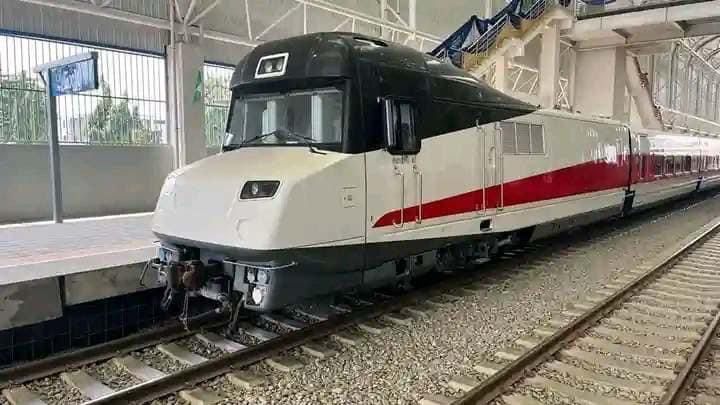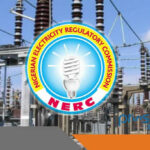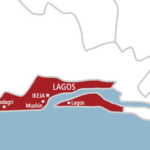The Lagos State Integrated Transportation system received a boost with the recent commissioning of the Lagos Red Line a year after the blue line was commissioned, Daily Trust reports.
On January 24, 2023, former President Muhammadu Buhari was in Lagos to commission the Lagos Blue Line, the first train mass transit ever built by a sub-national covering Marina to Mile 2. The fully electrified light rail system has since become operational, conveying thousands of commuters on the corridor on a daily basis.
But one year and a month after and exactly nine months to the administration of President Bola Ahmed Tinubu, another rail line came on stream which was described as a game-changer in the state’s transportation landscape going by the number of passengers it was designed to convey on a daily basis.
While the blue line changed the state’s transportation master plan being implemented by the state Metropolitan Area Transportation Authority (LAMATA) by adding the train option to the existing transportation channels, the red line is even bigger and a more impactful line as Agbado-Oyingbo route is one of the busiest transportation corridors between Lagos and Ogun States.
Customs intercepts arms, military uniform at Lagos port
Ogun plans entrepreneurs’ summit, to open new markets
The Red Line project is a 37-km rail route from Agbado to Marina with stations at Agbado, lju, Agege, Ikeja, Oshodi, Mushin, Yaba, Oyingbo, Iddo, Ebute Ero and Marina.
While the blue line track was wholly built by the state government, the Red Line shares the Nigeria Railway Corporation (NRC) track from Agbado to Ebute-Metta with connection to the marine to align with the state’s water transportation facilities.
The corridor inaugurated by President Bola Ahmed Tinubu was phase one of the three-phase project.
The three (3) phases are: Phase 1 (Oyingbo to Agbado): Construction and operation of railway systems from Oyingbo to Agbado, sharing the track of NRC standard gauge from Ebute Metta to Agbado (26.3 km). It has stations such as Oyingbo, Yaba, Mushin, Oshodi, Ikeja, Agege, lju and Agbado.
In addition, construction of four (4) overpasses and three (3) pedestrian bridges at Oyingbo, Yaba, Mushin and Ikeja to address at-grade level crossing challenges.
Phase 2 (Oyingbo to Marina): Extension of Red Line rail systems and operation from Oyingbo to Marina through an elevated rail infrastructure across the Lagoon. The stations are Iddo, Ebute- Ero and Marina. Phase 3 (Oyingbo to Agbado) involves the construction of independent rail systems from Oyingbo to Marina.
The state metro line project has been colour-coded in different phases comprising the Blue Line (Mile 2 to Marina); Red Line (Agbado-Marina); Purple Line (Redeem to Ojo); Yellow Line (Otta to Iddo); Brown Line (Mile 12 to Marina); Orange Line (Redeem to Marina) and Green Line (Marina to Lekki).
Envisioned by President Tinubu when he was governor of the state, Lagos State has decided to carry on with the vision by developing the light rail system to ease transportation in the state which has the smallest landmass in Nigeria with a huge population.
Therefore, the development of the light rail system was to enhance the mass transit system and ease movement of people and cargoes in the state.
The newly commissioned rail spans 27 kilometres from Agbado to Oyingbo, featuring state-of-the-art stations at Agbado, Iju, Agege, Ikeja, Oshodi, Mushin, Yaba, and Oyingbo.
Governor Babajide Sanwo-Olu explained that the government also completed the construction of five over-passes strategically located at Pen Cinema (Agege), Mushin, Ikeja, Oyingbo, and Yaba, “and ingeniously designed to ensure the seamless flow of vehicular traffic, undisturbed by the rail infrastructure.”
According to him, the launch of the red line commenced with the introduction of two state of the art Spanish manufactured Talgo train sets procured in 2022.
He said, “We subsequently procured an additional two sets of GWR rolling stock from the United Kingdom in 2023.
“And just a few weeks ago, bolstered by the unwavering support of the Federal Government, I was in China to finalize the purchase of six additional sets of rolling stock for both the Blue and Red Lines. These are currently being retrofitted for intra-state travel; and when they arrive, we will be able to increase the number of daily passenger trips.”
‘New Red Line to convey 250,000 passengers daily’
The Red Line was designed to move 750,000 passengers on a daily basis with the full complement of rolling stock on the line. But at the moment, the first phase of the Red Line will transport 250,000 passengers daily.
Daily Trust reports that the red line is expected to complement the existing Bus Rapid Transit (BRT) lane on the Lagos-Abeokuta expressway which means people can choose to go by road or train within the corridor and after extension to Marina, passengers can also connect to a ferry service taking advantage of the state’s transport master plan integrating all modes of transportation.
To fast-track this, there was the signing of the phase 2 from Oyingbo to National Theatre with the China Civil Engineering and Construction Corporation (CCECC) right at the venue of the inauguration and witnessed by Tinubu and other dignitaries in attendance including Chairman of the Governors of Forum, Governor Abdulrahman Abdulrasaq of Kwara State; Governors of Bornu, Imo, Ogun, Kogi and Deputy Governor of Nasarawa State.
As the Red Line shares tracks with the Nigeria Railway Corporation’s (NRC’s) service from Lagos to Ibadan, the governor commended former President Goodluck Jonathan “for signing-off on the track-sharing agreement, and the Nigerian Railway Corporation (NRC) for providing us with the necessary cooperation and support.”
He added, “There will be a total of six Lines on the 8 Lagos Rail Mass Transit System, when fully developed. We have already started preliminary work on the next two: the Green and Purple Lines. The Green line is a 71.49-kilometre route from Marina to the Lekki Free Zone, one of the fastest-growing industrial areas on the continent today, and also where we will be siting the new Lagos International Airport. The Purple Line is a 54.35-kilometre line from the Redemption Camp to Ojo, near the Lagos State University. The final two lines will be the Orange and the Yellow Lines.”
President Tinubu said the realization of the rail line was a culmination of his dream 25 years ago when he was first elected as Governor of the state.
“Today is evidence that it is good to dream and it is a serious validation of democracy by the people and for the people. When you put people at the centre and focus of your vision and planning, you would realise the value of a dream.
“25 years ago, I was elected to lead Nigeria’s most populous state, the smallest in land mass, when all that existed here was suppressed and aborted potential and when the dream begins, my team and I toiled day and night to craft and implement a developmental vision that will transform Lagos into the economic power house of Africa and a respected Mega city on a global stage. We are releasing that dream.”
For the Federal Ministry of Transportation, there is the need for other states to collaborate and partner with the federal government to fast track the development of their transportation infrastructure.
According to the Minister of Transportation, Senator Saidu Alkali, the project, borne out of the dedicated and collaborative efforts of the Lagos State Government and the Federal Ministry of Transportation, “reflects our commitment to transforming the landscape of transportation in our great country.”
He said, “I sincerely commend the giant efforts of Lagos State Government for making this historic project a reality. This railway infrastructure stands as a shining example of what can be achieved when Federal and sub-national Governments unite in a shared vision for progress. It also demonstrates sincere commitment to providing efficient and modern transportation solutions for our citizens.
“As we continue to celebrate this developmental project, I wish to acknowledge the invaluable partnership and foresight of the Lagos State Government, and call on other states to emulate by leveraging on existing infrastructure of the Federal Government within its borders to create solutions that would benefit the people of its state. Together, we have demonstrated that when the federal and state entities unite, the impact on the lives of our people is profound especially in transportation which is recognized as a gateway to the nation’s economy.”
While LAMATA has not come out with the fares for the route, our correspondent reports that any holder of the cowry card can use it on all the state’s run transportation systems including ferry services.
According to the Deputy Governor, Dr. Obafemi Hamzat, the train service would reduce travel time from Agbado to Oyingbo from two and half hours to 35 minutes while reducing pressure on the road.
The Chinese Ambassador to Nigeria, Cui Jianchun described the project as people-centric, saying Lagos is fast becoming a flagship state in railway development. He also commended the CCECC’s efforts at contributing to the infrastructural development of the state.
Residents around the corridor who spoke with our correspondent welcomed the new train service, which they said would make transportation easier. “I have no reason to go through the expressway to connect Oshodi or Lagos Island with this train movement. I will prefer to use this train always and I hope the fare would be friendly as well,” said a resident of Agbado, Mr. Kalejaiye.
With new train stations built for the project existing side by side with the Lagos-Ibadan Train Service, stakeholders said there is the need for adequate maintenance of the facilities.
Director of Rail, LAMATA, Mr. Ola Okusaga said the red line is not electric unlike the blue because “We are sharing tracks with FG which is not an electric track, and we cannot just start electric.”
“FG has future plans to also go electric and there are future plans from the State side too,” he added in a chat with our correspondent.
For the payment option, he said, “We are still using the same Cowry card payment system also for the Red Line Rail, you can buy your card and top up at the Train Station or BRT Terminal/Stations.”

 Join Daily Trust WhatsApp Community For Quick Access To News and Happenings Around You.
Join Daily Trust WhatsApp Community For Quick Access To News and Happenings Around You.


